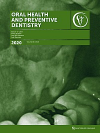Differences Between the Oral Health of People Aged 50 and 70 Years – An Exploratory Cohort Study
Oral Health Prev Dent 18 (2020), No. 2 (01.04.2020)
Purpose: To assess the extent of differences between the oral health of
people aged 50 and 70 years in a community-based setting.Materials and Methods: This research is part of the Interdisciplinary Study on Adult Development (ILSE). All participants lived in the city of Heidelberg, Germany. For the dental study, 194 participants born 1930–1932 (n = 88) or 1950–1952 (n = 106) underwent a comprehensive dental examination. For each participant the number of teeth present, the number of decayed, missing, and filled tooth surfaces (DMF-S), the Plaque Index (PI), the Gingiva Index (GI) and the Community Index of Periodontal Treatment Needs (CPITN) were determined. Depending on the structure of the data, differences between the birth cohorts were calculated by use of t tests or chi-squared tests. Multivariate analysis was also performed to assess possible effects of gender and birth cohort.
Results: Oral health conditions were significantly worse among septuagenarians than among quinquagenarians. Besides poorer oral hygiene, as measured by use of PI and GI (p <0 .001="" also="" carious="" cohorts="" conditions="" fewer="" for="" had="" in="" lesions="" natural="" number="" of="" p="" periodontal="" septuagenarians="" similar="" teeth="" the="" was="" were="" who="" worse="">0.05). These results were confirmed by multivariate analysis and seem to be mostly gender independent.
Conclusions: Oral hygiene and health is poor for quinquagenarians and septuagenarians, with more problems associated with greater age but not with gender. Longitudinal studies are necessary to evaluate the intraindividual development of changes of oral health during ageing.

Comments